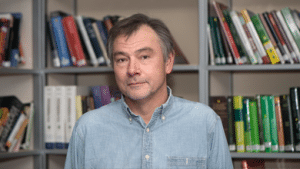Direction:Molecular and Evolutionary Genetics
Position:Full Professor
Undergraduate: University of Chicago Biology BA, 1982 Graduate: Yale University Biology Ph.D. 1991 2015-present: Professor, School of Natural Sciences and Engineering, Ilia State University 2001-2014: Director, Laboratory for Conservation, Evolutionary and Ecological Genetics (LCEEG), University of Idaho 2004-2014: Assistant Research Professor, Dept of Fish and Wildlife, College of Natural Resources, University of Idaho
2007-2012: Co-director, Center for Research on Invasive Species and Small Populations (CRISSP). 1998-2001: Research scientist, Department of Organismal Biology and Anatomy, University of Chicago. 1995-1998: Postdoctoral fellow, Imperial College, University of London, Dept. of Biology.
1991-1994: Howard Hughes Medical Institutes Research Fellow, Yale University.
Scientific interests / research interests
Biotechnology–applications of biotechnology for monitoring biological processes, including molecular evolution, molecular taxonomy, and molecular ecology, and the use of DNA-based methods for population monitoring and species identification.
Myxozoan biology–myxozoans are obligate parasites found in many economically important fish species, including trout and salmon, and are known to cause serious morbidity in host fish species. Because of their complex life cycle involving multiple hosts, myxozoan taxonomy relies heavily on application of molecular taxonomic methods to link various life stages of the parasite.
Invasive species–invasive species are a growing threat to ecosystems worldwide, However, the ecological processes that allow some introduced species to dominate in the invaded habitat are poorly understood. My research focuses on applications of DNA technology to monitor biological invasions, and enable early detection of alien species in novel habitats.
Teaching-My pedagogy deals with aspects of genetics, both transmission and molecular, for investigating biological process, with both research and commercial applications
Ott, T. M., E. Strand, and C.L. Anderson. 2015. Niche divergence of Abies grandis-Abies concolor hybrids. Plant Ecology 216: 479-490.
Newcombe, G., A. Shipunov, S. Eigenbrode, A. Raghavendra, H. Ding, C. Anderson, R. Menjivar, M. Crawford and M. Schwarzländer. 2009. Endophytes influence protection and growth of an invasive plant. Communicative and Integrative Biology 2: 29-31.
Shipunov, A., G. Newcombe, A.K.H. Raghavendra, and C.L. Anderson. 2008. Hidden diversity of endophyte fungi from invasive spotted knapweed (Centaurea stoebe L., Asteraceae). American Journal of Botany 95(9): 1096–1108.
Clark, M. E., B.D. Heath, C.L. Anderson, and T.L. Karr. 2006. Induced paternal effects mimic cytoplasmic incompatibility in Drosophila. Genetics 173: 727-734.
Clark, M. E., Anderson, C., Cande, J. and Karr, T. L. 2005. Widespread prevalence of Wolbachia in laboratory stocks and the implications for Drosophila research. Genetics 170: 1667-1675.
Canning, E.U., S.W. Feist, M. Longshaw, B. Okamura, C.L. Anderson, M.T. Tse, and A. Curry. 2005. Microgemma vivaresi n. sp. (Microsporidia, Tetramicridae), infecting liver and skeletal muscle of sea scorpions, Taurulus bubalis (Euphrasen 1786) (Osteichthyes, Cottidae), an inshore, littoral fish. J. Eukaryot. Microbiol. 52(2): 1-9.
Anderson, C.L., and T.L. Karr. 2001. Wolbachia: Evolutionary novelty in a rickettsial bacteria. BMC Evolutionary Biology 1 :10.
Misof, B., and C. L. Anderson. 2000. A phylogeny of the damselfly genus Calopteryx (Odonata) using mitochondrial 16s rDNA markers. Molecular Phylogenetics and Evolution 15: 5-14.
Anderson, C.L., E. U. Canning, and B. Okamura. 1999. Molecular data implicate bryozoans as hosts for PKX (Phylum Myxozoa) and identify a clade of bryozoan parasites within the Myxozoa. Parasitology 119: 555-561.
Anderson, C.L., B. Okamura, and E. U. Canning. 1998. Hox genes confirm that Myxozoa are extremely reduced triploblasts. Nature 392: 346-347.
In Review:Becker, H.T., K.T. Vierling, T.J. Rodhouse, and C.L. Anderson. 2015. Novel herbivory in the common insectivore Sorex vagrans revealed by DNA barcoding.
Current Courses |
Course Catalog |
|---|---|
| Master’s level
Doctoral level
One-cycle higher educational program
Master’s level
Doctoral level
|
2020-2021 Year One-cycle higher educational program
Master’s level
Doctoral level
2019-2020 Year One-cycle higher educational program
Master’s level
Doctoral level
2018-2019 Year Master’s level
Doctoral level
2017-2018 Year Master’s level
Doctoral level
2016-2017 Year Master’s level
Doctoral level
2015-2016 Year Master’s level
Doctoral level
2014-2015 Year Master’s level
Doctoral level
|

